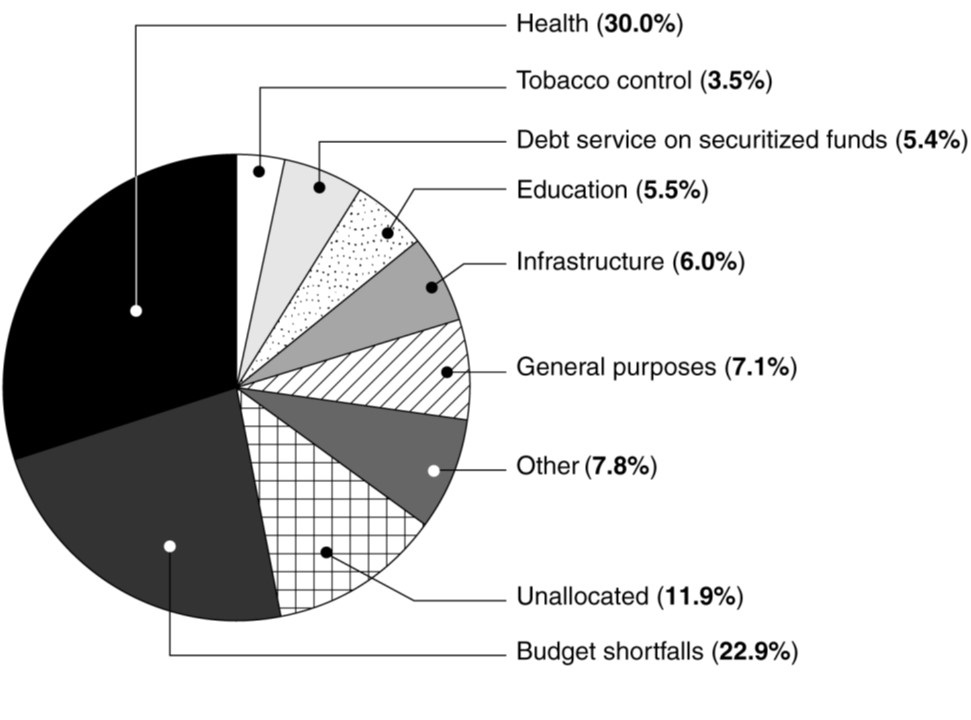Who Should Control Healthcare?
 Sunday, September 3, 2023 at 8:00AM
Sunday, September 3, 2023 at 8:00AM The American Academy of Emergency Medicine (AAEM) is urging stiffer enforcement of decades-old statutes that prohibit the ownership of medical practices by corporations not owned by licensed doctors (1). These century-old laws and regulations were meant to fight the commercialization of medicine, maintain the independence of physicians, and prioritize the doctor-patient relationship over the interests of investors and shareholders (2). Thirty-three states (click to see list of states that prohibit corporate ownership) plus the District of Columbia have rules on their books against the so-called corporate practice of medicine. In Arizona ownership by nonprofit entities is permitted, however as most of us know, nonprofit healthcare organizations are nonprofit in name only. Furthermore, over the years, companies have successfully sidestepped bans on owning medical practices by buying or establishing local staffing groups that are nominally owned by doctors and restricting the physicians so they have no direct control.
Those campaigning for stiffer enforcement of the laws say that physician-staffing firms owned by private equity investors are the guiltiest offenders. Private equity-backed staffing companies manage a quarter of the nation’s emergency rooms (2). The two largest are Nashville-based Envision Healthcare, owned by investment giant KKR & Co., and Knoxville-based TeamHealth, owned by Blackstone. Court filings in multiple states, including California, Missouri, Texas, and Tennessee, have called out Envision and TeamHealth for allegedly using doctor groups as straw men to sidestep corporate practice laws (2).
Physicians and consumer advocates around the country are anticipating a California lawsuit against Envision. The trial is scheduled to start in January 2024 in Federal court. The case involves Placentia-Linda Hospital in northern Orange County, where the plaintiff physician group lost its ER management contract to Envision. The complaint by Milwaukee-based American Academy of Emergency Medicine Physician Group alleges that Envision uses the same business model at numerous hospitals around the Nation. Furthermore, the complaint alleges that Envision uses shell business structures to retain de facto ownership of ER staffing groups, and it is asking the court to declare them illegal. “We’re not asking them to pay money, and we will not accept being paid to drop the case,” said David Millstein, lead attorney for the plaintiff. “We are simply asking the court to ban this practice model.” Although Envision filed for Chapter 11 bankruptcy, AAEM has vowed to pursue the lawsuit (3,4).
The plaintiff — along with many doctors, nurses and consumer advocates, as well as some lawmakers — hopes that success in the case will spur regulators and prosecutors in other states to take corporate medicine prohibitions more seriously. The corporate practice of medicine has “a very interesting and not a very flattering history” said Barak Richman, a law professor at Duke University (2). This is a gross understatement in my opinion. The physicians, nurses, and technicians are not responsible for poorer care at higher prices that we now see. Businessmen are responsible by squeezing caregivers and patients for every penny, a practice some call “hyperfinancialization”(5). It is not surprising charging as much as possible while delivering minimal care has evolved. Businessmen in healthcare maximize profits in these situations, especially when they can avoid any responsibility for the healthcare delivered. Rather, a system of “quality assurance” has evolved which is more concerned with controlling caregivers than quality (6).
If not businessmen, then who should control healthcare? Doctors are alleged to be poor businessmen. If by this it is meant that physicians are more likely to try and deliver the best healthcare at the best price rather than bill the maximum for minimal care, I would hope most of physicians would plead guilty. Most physicians are concerned about delivering quality healthcare at reasonable prices. I suspect that the rumor that doctors are poor businessmen was started by business interests for their own financial gratification.
Not all doctors are qualified to lead healthcare. Some are straw managers which will do whatever their business supervisors tell them to do. Physician leaders practicing medical administration should be held to the same high standards that doctors are held in care of patients. Therefore, some degree of local control must be kept. Those of us who advocate for better healthcare can hope the courts enforce existing laws where applicable. We also need to take action in supporting each other for the good of medicine and the health of our patients. However, we also need to do a better job policing ourselves. Those ordering unnecessary or questionable diagnostic testing or treatments need to be called out. If successful, the Envision Case could prompt legislators, regulators and prosecutors in other states to focus attention on clinical practice of medicine prohibitions in their own states and take up arms against potential violations or reinvigorate prohibitions of clinical practice with new legislation and/or regulation.
Richard A. Robbins MD
Editor, SWJPCCS
References
- American Academy of Emergency Medicine. Emergency Medicine and the Physician Practice Management Industry: History, Overview, and Current Problems. Available at: https://www.aaem.org/publications/key-issues/corporate-practice/emergency-medicine-and-the-physician-practice-management-industry-history-overview-and-current-problems/ (accessed 8/23/23).
- Wolfson B. ER Doctors Call Private Equity Staffing Practices Illegal, Seek to Ban Them. Kaiser Health News. December 22, 2022. Available at: https://www.virginiamercury.com/author/kaiser-health-news/ (accessed 8/23/23).
- Condon A, Thomas N. From private equity to bankruptcy: Envision's last 5 years. May 18, 2023. Available at: https://www.beckershospitalreview.com/finance/from-private-equity-to-bankruptcy-envisions-last-5-years.html (accessed 8/23/23).
- Holland & Knight Law. Federal Bankruptcy Court Stays Envision Healthcare Litigation in California. August 3, 2023. Available at: https://www.hklaw.com/en/insights/publications/2023/08/federal-bankruptcy-court-stays-envision-healthcare-litigation (accessed 8/23/23).
- Robbins RA. Who are the medically poor and who will care for them? Southwest J Pulm Crit Care. 2019;19(6):158-62. [CrossRef]
- Robbins RA. The Potential Dangers of Quality Assurance, Physician Credentialing and Solutions for Their Improvement. Southwest J Pulm Crit Care Sleep. 2022;25(4):52-58. [CrossRef]

